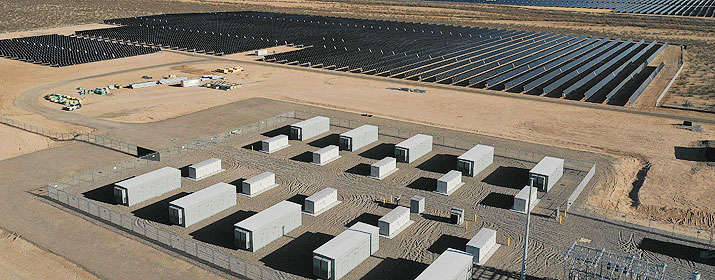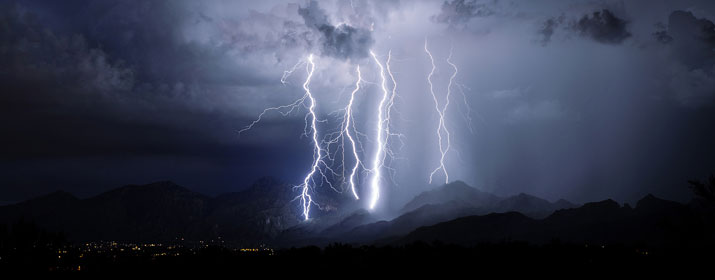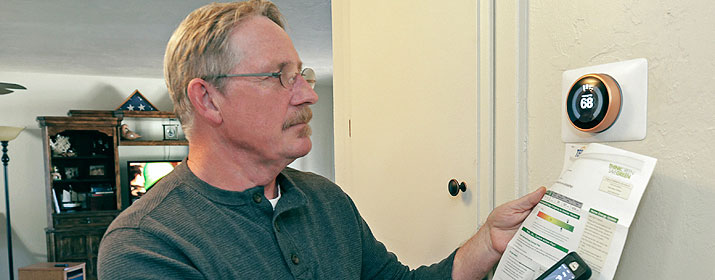
Tucson Electric Power can now deliver energy from the sun to customers – even at moments when the sun isn’t shining – with our newest and largest solar and energy storage system.
TEP started delivering energy from the Wilmot Energy Center (WEC) southeast of Tucson at the end of April. Located on 1,130 acres southeast of Tucson International Airport, the site includes a 100 megawatt (MW) solar array and a 30-MW battery energy storage system – each the largest of their kind on TEP’s local energy grid. The WEC will produce enough energy over the course of a year to serve the annual electric needs of about 26,000 homes.
The WEC’s battery is charged exclusively by its 314,000 solar panels, which are designed to track the movement of the sun for increased production. TEP will charge the battery through the morning and early afternoon, when solar resources are most productive, then deliver stored energy later that afternoon when customers’ energy needs are greatest.
“During peak demand periods, we can use the battery to provide power, shifting the output of WEC to later that afternoon,” said Christopher Lynn, Supervisor of Automation, Metering and Protection Engineering. “Imagine a late afternoon on a hot, humid summer day. Even when afternoon clouds roll in and reduce solar generation, we can still deliver solar energy to satisfy customers’ needs.”
TEP will be able to use the WEC’s batteries to compensate for intermittent production from wind and solar resources. The energy production of wind and solar facilities can spike and dip repeatedly throughout the day, depending on variables like changes in wind speed and cloud cover. The WEC battery system will act as a buffer, producing power instantly to fills in gaps caused by drops in wind and solar production.
Storing solar energy can potentially reduce energy costs for customers. TEP often buys additional energy during the heat of summer to satisfy customers’ peak energy demands, and energy purchased under these conditions is typically more expensive than at other times. By tapping solar energy produced at midday, TEP might be able to avoid more costly power purchases later in the day.
Battery systems also allow TEP to maintain reliable service in a variety of different ways.
“Battery systems like this one are often described as the ‘Swiss Army knife’ of the grid because they can perform multiple critical functions,” Lynn said. “We can tell it to produce energy, provide voltage support or perform other jobs.”
Larger battery systems could be used to support system reliability. If a generating resource unexpectedly stops producing power, charged batteries could provide power to customers while system control operators develop a recovery plan.
Batteries play an important role in TEP’s plan to provide more than 70 percent of our power from wind and solar resources and reduce carbon emissions 80 percent by 2035. Our 2020 Integrated Resource Plan describes how we anticipate expanding energy storage resources from 50 MW to more than 1,400 MW over the next 15 years. In addition to the WEC system, TEP has two 10 MW battery systems it uses for frequency regulation and other functions that support service reliability.
To interconnect the WEC to TEP’s energy grid, TEP built a new 138-kilovolt (kV) substation, transmission lines and a switchyard near the site. TEP invested about $25 million in the new facilities, which also strengthened electric reliability for customers and provided additional capacity to meet future energy needs in the area.
TEP plans to extend its 138 kV system to the University of Arizona through a new transmission line that will support delivery of energy from the WEC and our new Oso Grande Wind farm to campus. The university is buying green power from TEP through an innovative energy partnership.
TEP is purchasing power from the WEC under a long-term agreement with an affiliate of NextEra Energy Resources, the system owner and operator.
Customers can view a dashboard that displays the current output of our community-scale renewable energy resources at tep.com/solar-dashboard. Updated every three minutes, it provides a real-time look at how TEP is satisfying customer energy needs with wind and solar.






